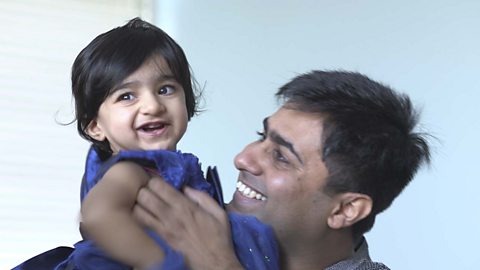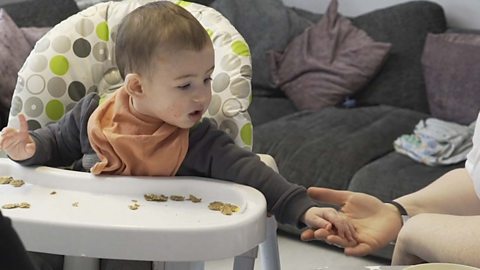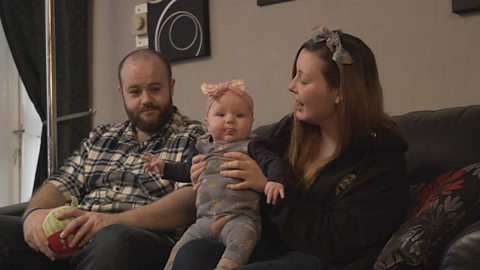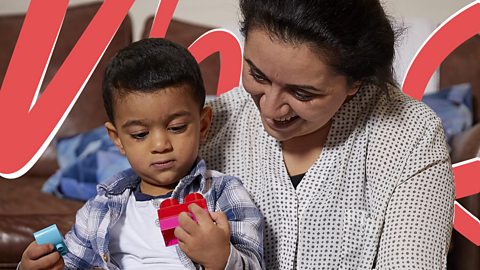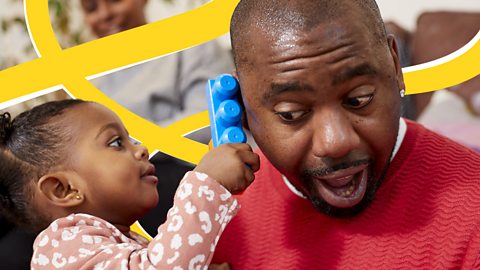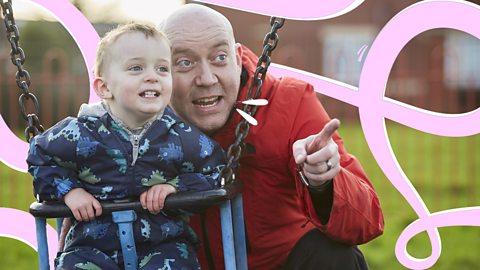One simple way of fast-tracking your baby's learning is to pay attention to the things they're taking an interest in, name those things and talk to them about them.
Speech and language therapist Cristina explains why this works.
Mum 1
Cheers!
Cristina (SLT)
Have you noticed your child paying particular attention to objects or people? You're right to think they're showing interest and they love to get you involved.
Trish (health visitor)
Is he interested in any particular toys at the moment?
Mum 1
Ones he knows that will cause noise like his wee cups because he knows they'll clatter once you build them up he likes them. Oh wow well done. He's really nosey so anything he's not seen before that you've got he wants to come over and see what you're doing with it.
Cristina
Joint attention happens when you and your baby are looking at the same thing or the same event and your baby recognises that you're both sharing this experience.
Mum 2
Go for it, pick it up, yay!
Cristina
It helps your baby to learn the words that you say and link them to meaning. This may feel like a really simple achievement but actually it's a very complex one and involves activation of multiple parts of the brain at the same time.
Dad
Ball, say ball? Was that the first time you said ball?
Cristina
These shared moments activate lots of areas in your baby's brain that are connected to social thinking and to language learning including areas associated with processing sounds and eye movements. As well as this, the temporal pole is particularly important, this is associated with processing emotions and remembering the meaning of words. Joint attention works best when you and your baby are both looking at and talking about the same thing. This helps your child to learn words and the meanings of those words.
Mum 1
Cheers!
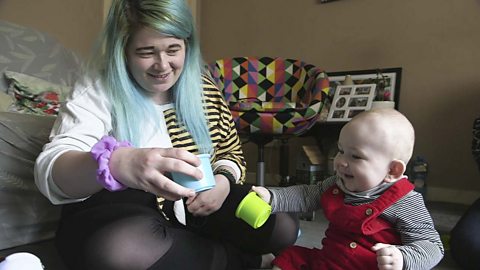
What is joint attention?
Joint attention is a term often used by speech and language therapists, which simply means paying attention to the same things as your child.
When your baby takes an interest in something, try and take notice of what things they're concentrating on.
Make lots of eye contact with your baby. If you look at and point out the same things they're already looking at and talk to them about those things as you go, they're more likely to pick up on the words you're using and make connections between the words and those things.
More about the importance of joint attention for babies' language skills

How does joint attention work?
Joint attention with your baby activates lots of areas in their brains that are connected to socialising and language learning. These include areas associated with processing sounds and eye movements.
It is also particularly good for the development of the temporal pole, this is a part of the brain that is involved with understanding emotions and remembering the meaning of words.
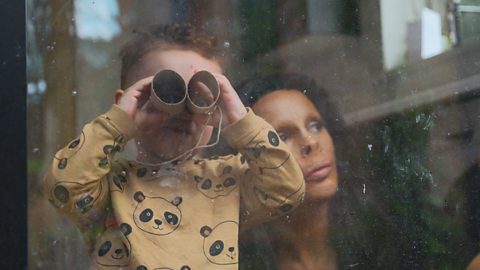
How to build joint attention
There are lots of activities that you can try with your baby to try and practise joint attention with them, from newborn stage upwards.
When they're less than 3 months old, their vision is still developing, so get up close with them and see whether a toy catches their eye. Or maybe what sounds grab their attention while they're out on a walk.
Blowing bubbles is a great activity for you both to focus when they're a little older.
You could try playing Hide and Seek with a favourite toy and talking about all the places they're looking.
As they get older, you could try making binoculars together and talking about all the things they seek out with them.
No matter what activities you try, remember to get down to their level and make plenty of eye contact with them. Use a really animated tone of voice too as this will help them to hold their attention with you.


